AP Psychology Unit 1 Study Set
0.0(0)
0.0(0)
Card Sorting
1/102
Earn XP
Description and Tags
Study Analytics
Name | Mastery | Learn | Test | Matching | Spaced |
|---|
No study sessions yet.
103 Terms
1
New cards
Psychology
the scientific study of behavior and mental processes which began with philosophers' thinking about thinking, and continuing as the biological/physiological study of the human mind and body.

2
New cards
Structuralism
early school of thought promoted by Wundt and Titchener; used introspection to reveal the STRUCTURE of the human mind
3
New cards
Functionalism
early school of thought promoted by James and influenced by Darwin; explored how mental and behavioral processes FUNCTION- how they enable the organism to adapt, survive, and flourish
4
New cards
Charles Darwin
English natural scientist who formulated a theory of evolution by natural selection (1809-1882)
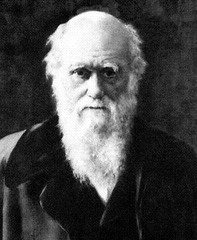
5
New cards
Sigmund Freud
Austrian neurologist who originated psychoanalysis (1856-1939); Said that human behavior is irrational; behavior is the outcome of conflict between the id (irrational unconscious driven by sexual, aggressive, and pleasure-seeking desires) and ego (rationalizing conscious, what one can do) and superego (ingrained moral values, what one should do).
6
New cards
William James
founder of functionalism; studied how humans use perception to function in our environment
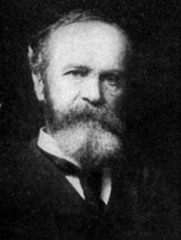
7
New cards
Ivan Pavlov
Russian physiologist who observed conditioned salivary responses in dogs (1849-1936)
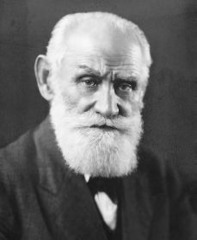
8
New cards
Jean Piaget
Four stage theory of cognitive development: 1. sensorimotor, 2. preoperational, 3. concrete operational, and 4. formal operational. He said that the two basic processes work in tandem to achieve cognitive growth-assimilation and accomodation
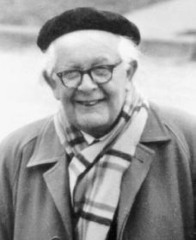
9
New cards
Carl Rogers
1902-1987; Field: humanistic; Contributions: founded person-centered therapy, theory that emphasizes the unique quality of humans especially their freedom and potential for personal growth, unconditional positive regard, fully functioning person

10
New cards
B. F. Skinner
behaviorism; pioneer in operant conditioning; behavior is based on an organism's reinforcement history; worked with pigeons
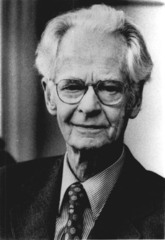
11
New cards
Margaret Floy Washburn
Was the first female PhD in psychology. Memory tip: She "washed the burn" of the other early female psychologist who did not earn a PhD (but would probably should have).

12
New cards
John B. Watson
behaviorism; emphasis on external behaviors of people and their reactions on a given situation; famous for Little Albert study in which baby was taught to fear a white rat
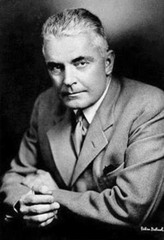
13
New cards
Wilhelm Wundt
german physiologist who founded psychology as a formal science; opened first psychology research laboratory in 1879
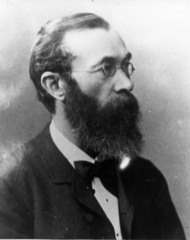
14
New cards
Gestalt Psychology
a psychological approach that emphasizes that we often perceive the whole rather than the sum of the parts
15
New cards
Edward Bradford Titchener
Structuralist psychologist whose efforts included introspection. This field of psychology failed due to the difficulties in practice, such as a variety of responses by participants.
16
New cards
Mary Calkins
First female president of the APA. Was refused the ability to receive a PhD from Harvard.
17
New cards
Dorothea Dix
A reformer and pioneer in the movement to treat the insane as mentally ill, beginning in the 1820's, she was responsible for improving conditions in jails, poorhouses and insane asylums throughout the U.S. and Canada. She succeeded in persuading many states to assume responsibility for the care of the mentally ill. She served as the Superintendant of Nurses for the Union Army during the Civil War.
18
New cards
psychodynamic psychology
a branch of psychology that studies how unconscious drives and conflicts influence behavior, and uses that information to treat people with psychological disorders
19
New cards
Behaviorism (behaviorist psychology)
Field that believes that scientific investigation of psychology should be focused only on behavior you can see; investigates whether individuals/animals can be trained to respond to conditioning and/or reinforcements
20
New cards
humanistic psychology
historically significant perspective that emphasized the growth potential of healthy people and the individual's potential for personal growth
21
New cards
Hierarchy of Needs (Maslow)
Maslow's pyramid of human needs, beginning at the base with physiological needs that must first be satisfied before higher-level safety needs and then psychological needs become active
22
New cards
Introspection
A method of self-observation in which participants report their thoughts and feelings used in particular by structuralists
23
New cards
Psychoanalysis
Freud's theory of personality that attributes thoughts and actions to unconscious motives and conflicts; the techniques used in treating psychological disorders by seeking to expose and interpret unconscious tensions
24
New cards
Rosalie Rayner
Watson's assistant in Little Albert experiment (small child develops fear of rats)
25
New cards
evolutionary psychology
the study of the evolution of behavior and the mind, using principles of natural selection (associated with Darwin)
26
New cards
Psychodynamic
A psychological perspective that analyzes how behavior springs from unconscious drives and conflicts
27
New cards
Behaviorism
A theoretical orientation based on the premise that scientific psychology should study only observable behavior
28
New cards
humanistic psychology
A clinical viewpoint emphasizing human ability, growth, potential, and free will.
29
New cards
evolutionary psychology
the study of the roots of behavior and mental processes using the principles of natural selection
30
New cards
biological psychology
a branch of psychology concerned with the links between biology and behavior
31
New cards
Cognitive Psychology
the scientific study of all the mental activities associated with thinking, knowing, remembering, and communicating
32
New cards
Sociocultural Psychology
perspective concerned with how cultural differences affect behavior
33
New cards
biopsychosocial approach
an integrated approach that incorporates biological, psychological, and social-cultural levels of analysis
34
New cards
clinical psychology
a branch of psychology that studies, assesses, and treats people with psychological disorders
35
New cards
counseling psychology
a branch of psychology that assists people with problems in living (often related to school, work, or marriage) and in achieving greater well-being
36
New cards
community psychology
a branch of psychology that studies how people interact with their social environments and how social institutions affect individuals and groups
37
New cards
psychiatry
a branch of medicine dealing with psychological disorders; practiced by physicians who sometimes provide medical (for example, drug) treatments as well as psychological therapy
38
New cards
developmental psychology
a branch of psychology that studies physical, cognitive, and social change throughout the life span
39
New cards
educational psychology
the study of how psychological processes affect and can enhance teaching and learning
40
New cards
human factors psychology
a branch of psychology that explores how people and machines interact and how machines and physical environments can be made safe and easy to use
41
New cards
industrial-organizational psychology
the application of psychological concepts and methods to optimizing human behavior in workplaces
42
New cards
personality psychology
the study of an individual's characteristic pattern of thinking, feeling, and acting
43
New cards
Psychometric Psychology
Looks at the measurement of behavior through the development of psychological tests; assesses issues of validity and reliability as well as statistical modeling
44
New cards
positive psychology
the scientific study of optimal human functioning; aims to discover and promote strengths and virtues that enable individuals and communities to thrive
45
New cards
descriptive research methods
Scientific procedures that involve systematically observing behavior in order to describe the relationship among behaviors and events. Can not explain behavior. May show show correlation but not causation.
46
New cards
case study
a descriptive technique in which one individual or group is studied in depth in the hope of revealing universal principles
47
New cards
naturalistic observation
a descriptive technique of observing and recording behavior in naturally occurring situations without trying to manipulate and control the situation
48
New cards
Hawthorne Effect (Observation Bias)
the behavior of study participants is altered simply because they recognize that they are being studied
49
New cards
survey
a descriptive technique for obtaining the self-reported attitudes or behaviors of a particular group, usually by questioning a representative, random sample of the group
50
New cards
random sampling
The key technique employed by survey researchers, which operates on the principle that everyone should have an equal probability of being selected for the sample.
51
New cards
interview
A descriptive method in which data is collected via a face-to-face, over the phone, or virtual conversation with researchers and participants
52
New cards
experimental method
A method of investigation used to demonstrate cause-and-effect relationships by purposely manipulating one factor thought to produce change in another factor.
53
New cards
longitudinal study
research in which the same people are restudied and retested over a long period
54
New cards
cross-sectional study
a study in which people of different ages are compared with one another
55
New cards
operational definition
a carefully worded statement of the exact procedures used in a research study
56
New cards
replication studies
repeated studies to obtain similar results
57
New cards
independent variable
The experimental factor that is manipulated; the variable whose effect is being studied.
58
New cards
dependent variable
The outcome factor; the variable that may change in response to manipulations of the independent variable.
59
New cards
confounding variable
a factor other than the independent variable that might produce an effect in an experiment
60
New cards
control variable
A variable that is kept constant during a controlled experiment.
61
New cards
control group
In an experiment, the group that is not exposed to the treatment; contrasts with the experimental group and serves as a comparison for evaluating the effect of the treatment.
62
New cards
experimental group
In an experiment, the group that is exposed to the treatment, that is, to one version of the independent variable.
63
New cards
random assignment
assigning participants to experimental and control conditions by chance, thus minimizing preexisting differences between those assigned to the different groups
64
New cards
placebo effect
experimental results caused by expectations alone; any effect on behavior caused by the administration of an inert substance or condition, which the recipient assumes is an active agent.
65
New cards
expectancy effects
the effect that the expectations of others can have on one's self-perception and behavior
66
New cards
placebo effect
experimental results caused by expectations alone; any effect on behavior caused by the administration of an inert substance or condition, which the recipient assumes is an active agent.
67
New cards
Single-blind procedure
research design in which participants don't know whether they are in the experimental or control group
68
New cards
double-blind procedure
an experimental procedure in which both the research participants and the research staff are ignorant (blind) about whether the research participants have received the treatment or a placebo. Commonly used in drug-evaluation studies.
69
New cards
statistically significant
an observed effect so large that it would rarely occur by chance
70
New cards
random assignment
assigning participants to experimental and control conditions by chance, thus minimizing preexisting differences between those assigned to the different groups
71
New cards
random selection
A way of ensuring that a sample of people is representative of a population by giving everyone in the population an equal chance of being selected for the sample
72
New cards
validity
the extent to which a test measures or predicts what it is supposed to
73
New cards
Reliability
the extent to which a test yields consistent results, as assessed by the consistency of scores on two halves of the test, on alternate forms of the test, or on retesting
74
New cards
Correlation
A measure of the extent to which two factors vary together, and thus of how well either factor predicts the other.
75
New cards
sample size
The number of subjects used in an experiment or study. Generally, the larger the better.
76
New cards
correlation coefficient
a statistical measure of the extent to which two factors vary together, and thus of how well either factor predicts the other (+ or -)
77
New cards
positive correlation
A correlation where as one variable increases, the other also increases, or as one decreases so does the other. Both variables move in the same direction.
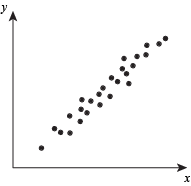
78
New cards
negative correlation
the relationship between two variables in which one variable increases as the other variable decreases
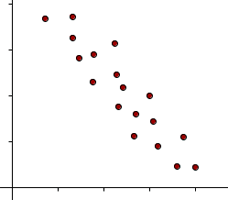
79
New cards
no correlation
there does not appear to be a relationship between two sets of data
80
New cards
spurious correlation
an apparent but false relationship between two (or more) variables that is caused by some other variable
81
New cards
mean
average
82
New cards
Median
the middle score in a distribution; half the scores are above it and half are below it
83
New cards
Mode
the most frequently occurring score(s) in a distribution
84
New cards
range
the difference between the highest and lowest scores in a distribution
85
New cards
standard deviation
a computed measure of how much scores vary around the mean score
86
New cards
normal curve (normal distribution)
a symmetrical, bell-shaped curve that describes the distribution of many types of data; most scores fall near the mean (about 68 percent fall within one standard deviation of it) and fewer and fewer near the extremes.
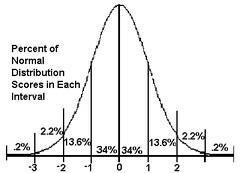
87
New cards
bimodal distribution
a frequency distribution having two different values that are heavily populated with cases

88
New cards
positively skewed distribution
A distribution where the scores pile up on the left side and taper off to the right.
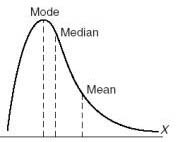
89
New cards
negatively skewed distribution
A distribution in which most scores pile up at the high end of the scale.
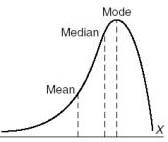
90
New cards
descriptive statistics
numerical data used to measure and describe characteristics of groups. Includes measures of central tendency and measures of variation.
91
New cards
inferential statistics
numerical data that allow one to generalize- to infer from sample data the probability of something being true of a population
92
New cards
statistically significant
an observed effect so large that it would rarely occur by chance
93
New cards
Ethics
the principles of right and wrong that guide an individual in making decisions
94
New cards
Ethics in Psychology
rules of conduct recognized as appropriate to psychology and way of life to protect the wellbeing of participants of psychological research.
95
New cards
American Psychological Association (APA)
World's largest association of psychologists with around 152,000 members including scientists, educators, clinicians, consultants and students
96
New cards
Federal Regulations
Laws enacted by the federal government.
97
New cards
Department of Health and Human Services (HHS)
a United States government organization that establishes guidelines for health information management compliance
98
New cards
Food and Drug Administration (FDA)
a federal agency charged with enforcing regulations against selling and distributing adulterated, misbranded, or hazardous food and drug products
99
New cards
Department of Education
Provides advice and funding for schools
100
New cards
Health Insurance Portability and Accountability Act (HIPAA)
created national standards to protect sensitive patient health information from being disclosed without the patient's consent or knowledge